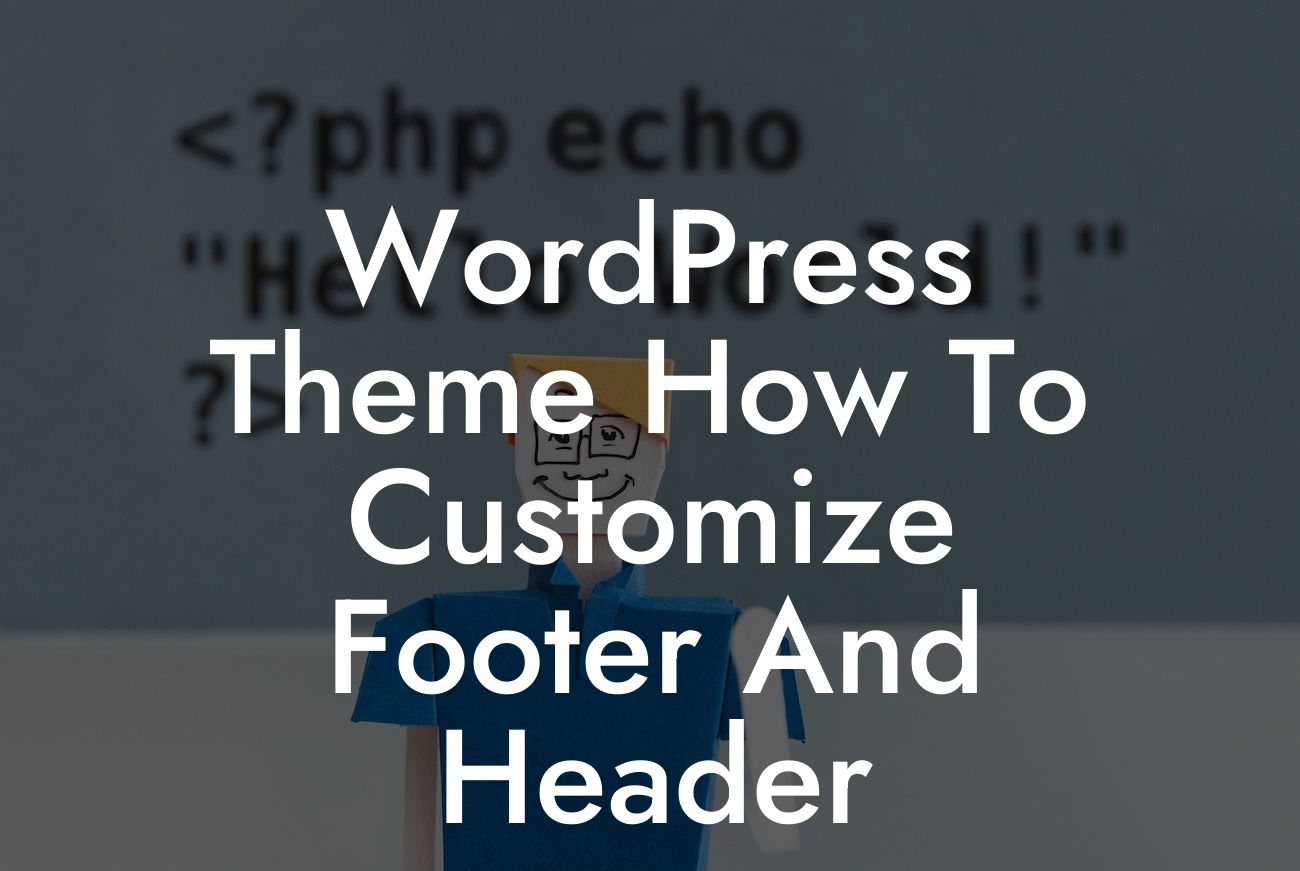When it comes to building a professional and unique website, customization is key. A dull and generic look can make your online presence forgettable. However, with WordPress, the world's leading content management system, you have the power to add your personal touch to every aspect of your website. In this guide, we will focus on customizing the footer and header of your WordPress theme. By the end, you'll be armed with the knowledge and tools to transform your website into a captivating online destination.
Customization plays a crucial role in creating a website that stands out from the crowd. One area that can greatly impact the overall design and functionality of your website is the footer and header. Let's dive into the step-by-step process of customizing these elements:
1. Choose a suitable theme: Before customizing, it's essential to select a WordPress theme that allows for header and footer customization. Look for themes that have built-in customization options or are compatible with customizer plugins.
2. Access the WordPress Customizer: Once you've chosen a theme, navigate to the WordPress Customizer. You can access it by going to your WordPress dashboard, clicking on "Appearance," and selecting "Customize."
3. Customizing the header: In the Customizer, find the "Header" or "Header Settings" section. Here, you can modify various aspects of your header, such as the logo, menu, and social media icons. Make sure to use suitable HTML tags for headings and bullet or ordered lists to make your customization process easier.
Looking For a Custom QuickBook Integration?
4. Customizing the footer: Similar to the header, the Customizer offers options to customize the footer. You can adjust the layout, add widgets, or customize the copyright information. Consider aligning the footer design with the overall style of your website to maintain consistency.
5. Additional customization options: To push your customization further, consider using custom CSS code or plugins. These tools allow you to add unique design elements or additional functionalities to your header and footer.
Wordpress Theme How To Customize Footer And Header Example:
Let's imagine you have a small e-commerce business, and you want to customize your website's header and footer to match your brand identity. Using the WordPress Customizer, you can easily upload your business logo, rearrange the menu items, and add social media icons to the header. In the footer, you can display essential links, contact information, and copyright details. By personalizing these areas, you create a cohesive and professional online shopping experience for your customers.
Congratulations! You've successfully learned how to customize the footer and header of your WordPress theme. With these newfound skills, you can now take control of your website's design and functionality, leaving a lasting impression on your visitors. Don't forget to explore other guides on DamnWoo to further enhance your online presence. Additionally, check out DamnWoo's collection of awesome WordPress plugins, specifically created for small businesses and entrepreneurs like you. Take your website to the next level and bring your extraordinary ideas to life! Start customizing, and share your success with others.













